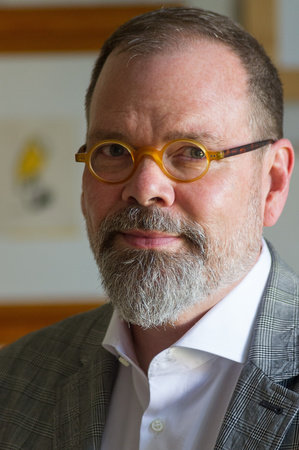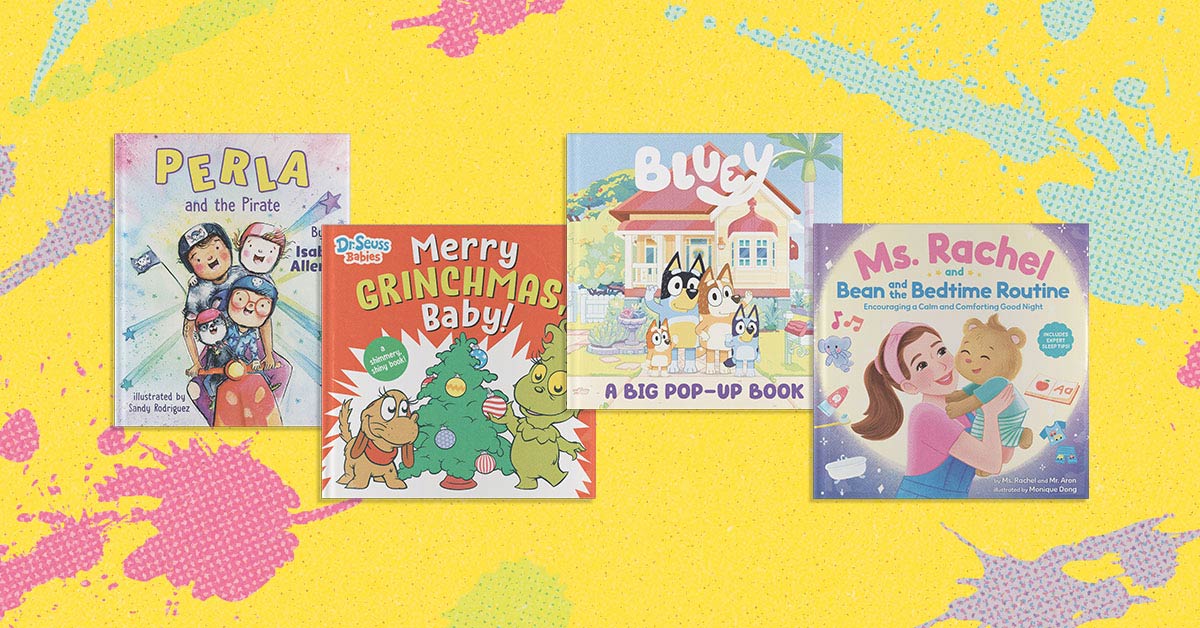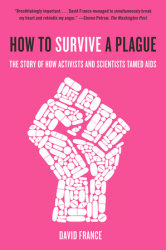When David France was a young writer in his twenties, he unexpectedly found himself with a front-row seat to one of one of the world’s most frightening public health disasters. The AIDS crisis killed millions — 100,000 in New York City alone — and since those primarily afflicted were gay men, the public (and its elected officials, such as NYC Mayor Ed Koch and President Ronald Reagan) remained indifferent to the problem until a full-scale epidemic was already underway. Without any anti-discrimination laws in place, the infected and uninfected alike found themselves unfairly evicted, fired, and shunned from hospitals due to prejudice and misinformation about how the disease was spread.
France conjured recollections of these events in his Oscar-nominated 2012 documentary “How to Survive a Plague,” showing how the gay community’s coordinated response to the disease paved the way for a new era of civil rights activism. What awaits readers this fall, however, is a far more personal view of the lives that were chewed up and spit out by the era’s particular brand of religious arch-conservatism — including France’s own.
His new book (also entitled How to Survive a Plague) is part gripping medical procedural, part first-person narrative, beginning when there were just 41 known cases of what was originally called “GRID” — Gay-Related Immune Deficiency. France walks the reader day by day, week by week through the shocking developments which eventually produced a successful treatment, if still not yet a cure. His written portraits of the battle’s key players contain radical displays of humanity in the face of fear and ignorance, in many cases mustered by those who’d already begun showing symptoms of infection.
In the following interview, France considers the numerous ways our world has changed in the years since the plague — and some of the unfortunate ways it hasn’t.
PENGUIN RANDOM HOUSE: This book’s timing has turned out to be incredible, with a new crew of arch-conservatives gaining control of the government with a platform that excludes gay rights from “the American Dream.” What can we learn from the past that might save us in the future?
DAVID FRANCE: The closest parallel I can think of in American history to what’s happening now is Ronald Reagan, and the Reagan years. I keep going back to passages in the book and thinking, these should be used as warning signs about what could happen. And we know how many hundreds of thousands of Americans died in the Reagan years because of ideology. Seeing this ideology come back in the fullest form, maybe even fuller than it was then — or maybe it just seems starker now, because it’s rolling back time, instead of cementing time — I see it as a warning, and maybe as a blueprint for how to organize.
Right now I don’t know what we need to organize to do. All we know is the developing roster of personalities and what they’ve said in the past. I think that’s why people are so frightened right now. A major element of fear is anticipation, and here we are anticipating. We really don’t know what it is yet.
PRH: What you’ve documented here is a time when the public’s unwillingness to address the concerns of a minority community led to a nationwide public health crisis. Everyone should know the history of it — and yet even recently a relative of mine raised the specter of gay men deliberately infecting others (a common concern among the so-called “alt-right”). How do we counter misinformation and catch people up to speed when so much of America seems to be frozen in that mentality?
DF: I certainly think we have to keep the stories alive. History has power, and the history of the Reagan years has not really been told. I think my book is maybe one part of it, one corner of it.
PRH: How did you personally cope with retelling it, reliving all these details and individual moments of suffering and death? It must have been an incredible burden.
DF: It felt exactly like that, a burden. I felt the responsibility of doing it, and doing it right. To go back and see what was initially 41 cases went on to kill 40 million people, and to see exactly what moments in time were opportunities that were missed or squandered, and allowed that to happen — it was even more horrifying going back and looking at it than it was while it was happening. And I have to tell you, I’m in therapy now for the first time in my life. I think it’s from that kind of bald look at that time — I realized how wounded one gets when one is confronted by such painful disregard.
PRH: Well, the process of surviving and helping other people also requires one to defer a lot of that realization.
DF: It absolutely does. I think even before my movie came out, the whole conversation among survivors about those years had been blunted. I think nobody had the wherewithal to go back and open up those memories. And that’s a process in the community of survivors that’s just beginning. I’m hoping this book helps people in future generations also confront that time in history, and the crimes against humanity that were committed then.
PRH: Do you think that in that way the “How to Survive a Plague” movie serves as a sort of prelude or introduction to the book? It’s a powerful film, but nothing can compare to 500 pages of lived experience.
DF: The book and the movie don’t cross over much. The movie is the story I was allowed to tell by the multiple archives that I mined for stories. It’s a microcosm, and a real key microcosm of the kind of activism that was able to surmount the hatred and disenfranchisement and powerlessness, but it was a very tiny corner of a massive picture, and that’s what I wanted to go on and try and give life to.
PRH: People lament often about how divided the LGBTQ community has become, but as you’ve shown, the history of AIDS is also the history of communities, organizations, and friendships splintering apart, just as much as it was about coming together in other ways. Do you think we’re really any more tightly or loosely knit now than we were then?
DF: I would say that we’re more loosely knit, that our community is more alienated from itself. But I think that’s true of America generally. I think social media has replaced a lot of true human connection, and kept us from congregating — like we see at ACT UP, going to meetings. Filling a room, and having a debate among people, not among written missives. That builds a sense of community, and gives a forum for the community to determine its goals and define its strategies. I think we’ve lost that, across the whole spectrum.
Something else just occurred to me. Maybe one of the reasons our community is so detached from itself is the idea that we lost a generation of gay men. When I came to New York I had friends of all ages. Gay men in their sixties took me on in my twenties, and taught me things, showed me photographs of Fire Island from the ’50s, and brought me into the family. Between my generation and yours, is a huge hole. I know from people I meet in younger demographics that they don’t have many connections with older queers. That’s kind of broken this tradition of introduction and camaraderie, and the creation of a shared sense of culture and community.
PRH: Speaking of social media: while reading the book I couldn’t help wondering how some of the technological developments that have occurred since the epidemic — the internet and social media, let alone medical stuff — really could have turned the tide in identifying an epidemic, preventing infections, informing the public etc. Do you ever think about that now as things continue to develop?
DF: I certainly did think about it as I was writing the book, when I was remembering and telling the story of the creation of “safe sex,” for example, and what it took to get that message out, and how successful it ultimately was. How posters around a city were a call to action, in a way that maybe a news feed on Facebook would be today.
You know, ACT UP, when it was helping build chapters across the country and then across the world, they actually flew to those places to meet with people. There were airport summits: various treatment activists would all fly into a central city and meet at the airport, and then fly back out again. That was expensive and hard to do, and it would certainly have been easier to do with a Google Hangout, but there was something about the face-to-face. There’s something about seeing one another, and seeing how your comrade’s health had declined since the last time you met, and watching the emotional toll of the disease in people. Reinforcing each other’s strength. There was something important about that, that I don’t think the internet can help us with.
PRH: Those instructions for safe sex practices managed to change the way gay men had sex, and related to each other, and what kind of contact was prioritized. Do you think the effects of that have echoed to the way we do everything today?
DF: You know, I don’t think so. You’re actually talking about the sexual behaviors of the community? So much has changed since then. The understanding, which took years to develop, that the people who are on treatment are virtually non-infectious; the development of the idea of PrEP, the same medication that’s used to prevent infections, it has all really opened up the possibility that a new generation of gay men could define physical intimacy in their own way.
The idea as a young gay man that falling in love was suicide, was potentially fatal, was a horrifying thing. For people to realize that those who would most endanger you were those with whom you were the most intimate, and that created a kind of disastrous mindset in a lot of people. The advent of safe sex helped with that, but right up through to this century there was still this idea that gay love was more dangerous than anything you could imagine. It’s something we had to fight against and build propaganda against, and then try to change the way those little voices in our own heads were speaking to us. And it’s a great relief to know that it’s not the case in that same way anymore.
PRH: During the election I encountered a lot of people who wanted to dismiss gay issues and perspectives as political ones, that could be reduced to a matter of opinion — as opposed to painfully personal ones that came out of lived experience. How does a person begin to distinguish between “personal” and “political” when making decisions that are going to affect other groups of people — particularly minorities?
DF: When we look back at AIDS, we had to realize that in the eyes of most people, and in the eyes of our culture and spiritual leaders, we weren’t “people.” We were deviants. Whatever this thing was, we were bringing it on ourselves. It’s not that a group somehow meanly decided to strip us of any concept of our citizenship, it’s that they really didn’t see us as human.
The very early days of AIDS activism were about establishing our own humanity in the eyes of the larger world. That’s why in ACT UP they did those actions they called Kiss Ins, like “Look, we’re just going to kiss each other and everything’s going to be fine. You’re going to look at it. Everything’s going to be okay.” It was a very strong political statement, and I think ultimately very effective. I think the first gay kiss on network news was among AIDS activists. It might have been the first gay kiss many people saw on television. And nowadays you can’t even turn on a Shonda Rimes program without seeing way more than that.
We look at the rhetoric being thrown around today, and it’s not rhetoric about other human beings, it’s about individuals who are not regarded as human beings — not in the same way. Who was that official in West Virgina who was just caught describing the First Lady as an “ape in heels”? That’s about denying the recognition of humanity. And I think we just saw a real surge in that in the hearts of the American people, and that’s really horrifying.
PRH: Who do you still have in your life from that time, and who do you most wish could still be here today?
DF: I lost a great many people in the middle of the epidemic, and some even after, like Spencer Cox. But I do have people from those years who are really important elements of my life, and they’re mostly lesbians, mostly women. We have a bond of having survived that together, having witnessed that and fought that, and having lost and suffered together.
I can’t really imagine — maybe it’s a fault of my own — bringing back to life those people who are gone. Having spent so much time over the past couple of years in the work on the book, remembering them and arraying their photographs in front of me, and watching them die — they are all arrested in their youth. For many of them, in their prime. I don’t know what the middle years would have done for them. I don’t know what witnessing that excruciating time would have done to them. I don’t know what they would look like in the ’90s, much less today. I focus in the book mostly on people I’d gone to college with; we had a gay group on that college campus, and from that group, in my class, I’m the only one that survived. It robbed them in their youth, and robbed the rest of us from knowing what they might have become.












